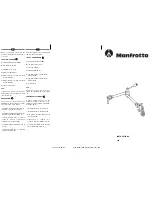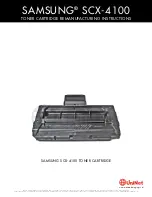
4-9
Chapter 4 Outdoor Equipment Maintenance
Redline Communications Inc. Confidential and Proprietary
Performing a Spectrum Sweep
The proper operation of your RedMAX network requires clear and stable operating
conditions within the RF spectrum in all of your sectors. It is a good idea to verify the RF
spectrum during the site selection, again during the deployment phase to guarantee the
spectrum conditions of the network and again on a routine maintenance schedule for
optimization or potential system troubleshooting.
Basic spectrum sweep measurements can be made in the 3.5 GHz band with the use of
an external spectrum analyzer.
In order to discard the influence of external sources of interference in a particular network,
you should conduct these spectrum sweeps at the sector controller antenna port and under
the following two conditions for comparative analysis on interference suppression between
the same system cells:
•
Under no influence of the same system frequencies used in the area (all sector
controllers should be off.
•
Under the regular operation conditions of the system (all sector controllers are on).
Since the system needs to be powered off for part of this test, you should take these
measurements during a scheduled maintenance window.
The following procedure and analysis techniques can be used to identify potential sources
of RF interference. This procedure should have been conducted prior to commissioning
the site and can be performed periodically to verify the results.
Detailed instructions on performing a spectrum sweep are provided in the Guide to Field
Spectral Analysis. This document is available on the Redline partner Web site or you can
contact [email protected].
Sources of Potential Interference
If you have encountered interference in your spectrum scan, the following sources may be
causing the interference:
•
Newly deployed sector controllers that have not yet been optimized for prospective
frequency or antenna alignment.
•
Sector controllers that have not been optimized for prospective frequency or antenna
alignment from a competitor’s network.
•
Poorly implemented major frequency design resulting in interference.
•
Poorly implemented major frequency design resulting in interference from a
competitor’s network.
•
Unregistered RF equipment within or near your sector.
Before taking any action you will need to further analyze the nature of the interference.
•
Is it constant in time?
•
Does it interfere at all times or only at a specific times and days
















































